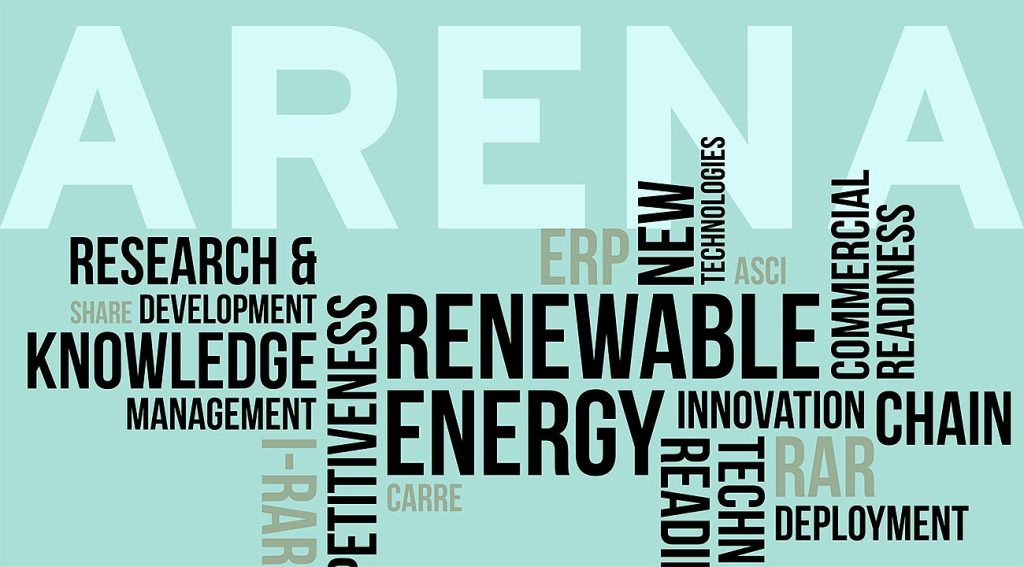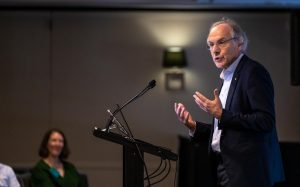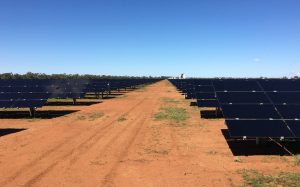How ARENA’s future will build on its past
What principles will guide ARENA into its second decade of supporting the global transition to net zero emissions? Look no further than its past.

“The only thing that will get us to zero emissions is technology. Technology will deliver the solutions. And that is what ARENA is focused on. And I deeply respect that.” Former Australian Chief Scientist Alan Finkel
A lot of water has passed under the bridge since the Australian Government, under the prime ministership of Julia Gillard, established ARENA on 1 July 2012 with a ten-year outlook and an original funding envelope of $3.2 billion, including $1.5 billion of existing funding from other initiatives.
ARENA’s purpose is to support the global transition to net zero emissions by accelerating the pace of pre-commercial innovation, to the benefit of Australian consumers, businesses and workers.
By the end of 2022, ARENA had provided $1.96 billion funding to 632 projects, worth a total of more than $8 billion.
Along the way there have been breakthroughs in solar energy, hydrogen production, new grid scale batteries and collaborations with industry.
A recent gathering in Canberra celebrated not only ARENA’s 10th anniversary but also that of the Clean Energy Finance Corporation (CEFC), established on 3 August 2012 . It was an event that brought together many former executives, current staff and politicians of various political hues.
Federal Minister for Climate Change and Energy Chris Bowen described the past decade’s work of both ARENA and the CEFC as “a great national achievement”.
“When you think about the successes,” Mr Bowen said, “the emissions reduction we have had [over the past 10 years] are in no small part due to the work of ARENA and the CEFC.”
Mr Bowen also outlined challenges ahead in pursuit of the Government’s targets of 43 per cent national emissions reductions on the 2005 level, and for renewable energy to hit 82 per cent of Australia’s electricity grid supply by 2030.
“It’s a big job,” he said. “When you think about 2030, it seems a long way away. It is closer to us than the anniversary we are celebrating tonight.”
How was ARENA born?

But while the atmosphere was one of celebration, it was also an opportunity to reflect on ARENA’s past and its tricky birth.
Ivor Frischknecht was ARENA’s first CEO, staying in the role until 2018. He compares the task of building ARENA in 2012 as trying to complete a difficult and dynamic jigsaw puzzle.
“The thing to understand is that ARENA is the collection of all the then existing government programs,” he said.
“So not only did we get a substantial funding allocation, but we also got a large number of projects and programs, many of which were not performing well or not being managed consistently.
“We not only had to set up a new agency from scratch, we also had to immediately start managing these projects, many of which had to be terminated or renegotiated.”
“So, it was a kind of a combination of a start-up and turn-around all at the same time.’
The early years
Previously working in venture capital, Mr Frischnecht recalls a “very intense” first couple of years and a steep learning curve in governance behaviour.
“Here you can’t just not return a call if you’re too busy,” he said.
“You have to return the call and you have to document decisions properly. It’s a very good discipline to have but it takes a while to pick that up,” he said.
Nicola Morris came to ARENA via a different route. “I was originally the head of the establishment committee back in 2011,” she said.
“That was responsible for drafting the legislation, putting in place the board, the executive and the operating model and the service level agreement.”
“And then I just kind of fell in love with the subject matter and decided to stay,” she said.
That period was defined by the minority Labour government under the prime ministership of Julia Gillard.
“We were one of 47 measures in the Clean Energy Future Package. So, we were born at the same time as the CEFC,” Ms Morris said.
“But of course, one of the other measures in the 47 measures was the carbon price, or carbon tax.”
“So those 47 measures were really intended to work together. But of course the carbon price didn’t survive, although, interestingly, both ARENA and the CEFC did survive.”
Nicola Morris left ARENA in 2014, after leading what was known then as “Big Solar”. She returned in 2016 as Chief Operating Officer until 2021.
Consistent objectives

While ARENA has faced challenges to its existence, Mr Frischnecht says it has remained consistent in its objectives.
“We were always very focused on getting the maximum return possible for a given investment,” he said.
“But the return was not thought of in necessarily a financial sense. Usually, it was thought of in terms of how quickly can we get to an answer? Does this technology work or not? How quickly can we get this new technology into the market? How quickly can we make it commercial in the sense that it is bankable?
“So, it’s about getting maximum bang for your buck, but in a way that is focused on the social benefit as opposed to the financial returns.”
That focus has been a real strength, says Alan Finkel, Australia’s Chief Scientist from 2016 to 2020, and now Special Adviser to the Australian Government on Low Emissions Technologies.
“A lot of other organisations have got a focus on the support for technology. The financing, government policy, things like that,” he said”
“But ARENA’s focus is just clear on helping to find the right trajectory to reducing price and improving the efficiency so that the technology gives us the best value for money. And I deeply respect that,” he said.
A standout ARENA milestone

Ivor Frischnecht says he is proud of an enormous amount of progress achieved during his six years at ARENA. But one event, first announced in July 2015, sticks out.
“The single thing that probably had the biggest impact was running the first solar auction in Australia,” he said.
“Large scale solar was not taking off in Australia because it was too expensive relative to wind. That was not the case overseas.
“We figured out that what they needed here was more volume to get over that initial hump, so that it could compete with wind.
“So what we did was we had a very deliberate program of a number of one-off projects. Quite expensive ones, like the AGL one, Morree solar farms, some of the early [projects]. And then we held an auction.
“So, people bid in for the minimum amount of subsidy from ARENA. And we thought we’d maybe have to do a couple of rounds, maybe three, but we only had to do one.
“And out of $100 million that we allocated to it, it went way further than we ever thought.”
According to Mr Frischnecht, that auction marked a milestone for solar generation, proving “just enough’ to kickstart the industry.
How is ARENA evolving?

There have, of course been many other highlights along the way, and lessons learnt. ARENA’s remit includes sharing knowledge gained through projects it supports. Both the successes and the failures.
Thousands of publications are available through the ARENA website, Insights Newsletter, ARENAWIRE blogs and newsletters. ARENA also organises and hosts events, including Insights Forums and Distributed Energy Integration Program (DEIP) Dive evnts.
Current ARENA CEO Darren Miller, who replaced Mr Frischnecht in 2018, says the agency is constantly evolving as renewable energy know-how advances.
“The energy transition is just that, it’s a transition, it changes,” Mr Miller said.
“Our strategy today would not have fitted 10 years ago. And the strategy from then would be irrelevant today because the challenges you come up against keep changing,” he said.
“Listening to the market is a key thing. We’re not the fount of all knowledge,” he said.
“With all the will in the world, we might see a technology that needs to come of age, but if the researchers aren’t focused on it or the market isn’t interested then it’s very difficult for us to succeed.
“So, it’s about good listening. It’s about collaboration with the industry, with researchers. And it’s about figuring out those next key steps in the energy transition where ARENA’s unique blend of skills and mandate can help accelerate that technology,” he said.
Which sounds like a strategy remaining true to the agency’s origins back in 2012.
LIKE THIS STORY? SIGN UP TO OUR NEWSLETTER

ARENA